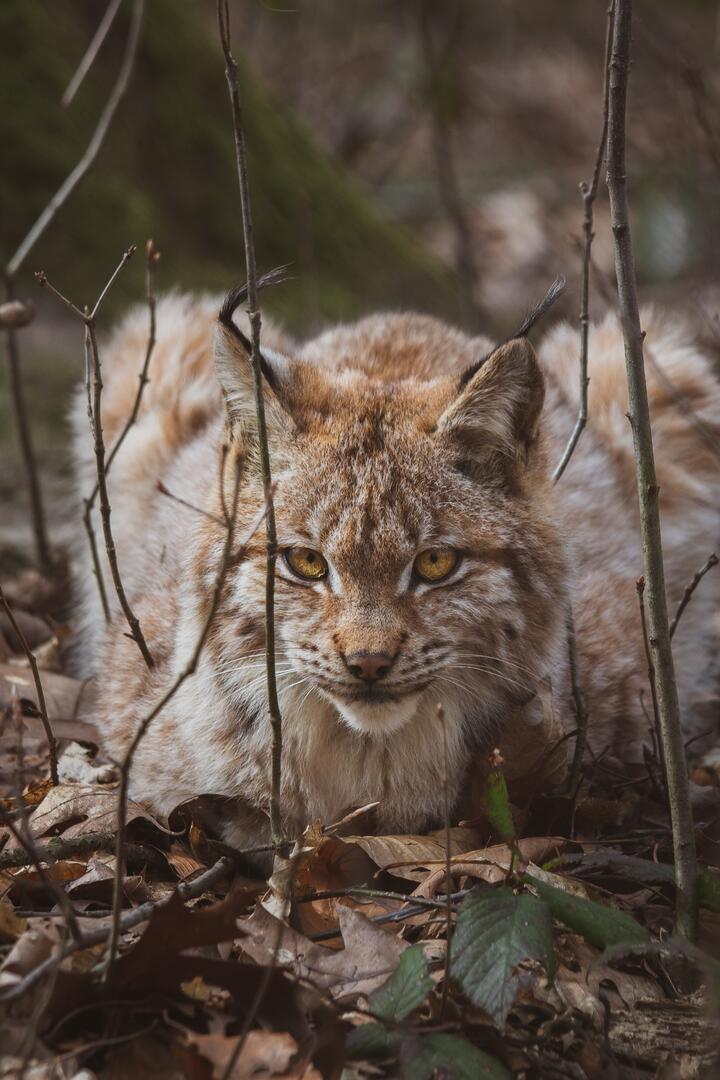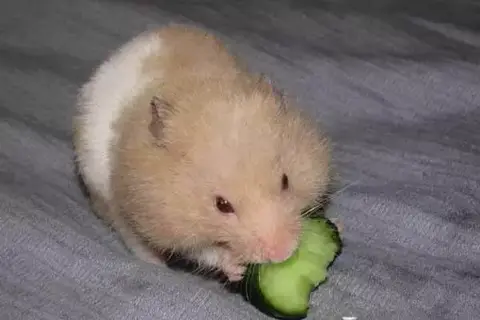Interesting Facts About The Canadian Lynx
Camilo WalkerWe’ll tell you interesting facts about the Canadian lynx.
Canadian Lynx Spreading
 Photo by Meg Jerrard on Unsplash
Photo by Meg Jerrard on UnsplashThe Canadian Lynx lives in wooded areas of Alaska, Canada, and California (USA).
The appearance of the Canadian lynx
This species of lynx is half the size of the Eurasian lynx, its weight is 8-14 kg, body length is 86-117 cm, height in the crest is 60-65 cm. Like all lynxes, the Canadian look has long fur on the sides of its face, black fur tassels on its ears and a short tail with a black tip.
The color of the wool is reddish, white marks are scattered along with the main background, which gives the impression of being covered with snow. There are no spots, and if there are, they are light and it is difficult to distinguish between them in the main color. There is a white spot on the back of the black ears, as many cats. There is an unusual color of “blue lynx”, in which the fur is very light, almost white. Lynx’s paws are long, the foot is wide.
North American lynx is easy to distinguish from short-tailed cats on the tail: it has the entire tail tip is black, while the cats have the end of the tail is black only on top, and the lower part of the tail end is white. The lynx also has a wider foot, thicker fur on its face, longer paws and longer tassels on its ears.
Diet and feeding behavior of the Canadian Lynx
 Photo by Pixabay on pexels
Photo by Pixabay on pexelsLynx is fed exclusively by hares, so it is found in hare habitats, and the population of lynx is fully dependent on the growth or decline of the hare population. In addition to the main diet are small rodents, red deer, and other animals, but the basis of the diet is hares.
The activity of the Canadian lynx
The Canadian lynx leads a daytime lifestyle and also hunts during the day. They prefer to live alone, except during the period when females breed.
The breeding of the Canadian Lynx
After 63-70 days of pregnancy, the female gives birth to 1-8 kittens, the number of which depends on how well the mother is provided with food. Their eyes are open on the 10th-17th day, and on the 24th-30th day, they can already leave the den. The mother feeds them milk for 3-5 months, young lynxes reach the age of 23 months, but they can start breeding already at the age of 10 months if there is plenty of food.
The lifespan of the Canadian Lynx
 Photo by Markus Spiske on pexels
Photo by Markus Spiske on pexelsIn natural conditions, they live up to 15 years.
Interesting facts about the Canadian lynx
Canadian lynxes are at risk of extinction due to the destruction of their habitats. Many lynxes get into traps, these animals are the object of hunting, their fur is valued. These animals are listed in the II CITES, it is believed that their number does not exceed 2000.
Specialists believe that the lynx living in Newfoundland should be considered a separate subspecies of Lynx canadensis subsolanus.
There are two subspecies of Canadian lynx:
Lynx canadensis Canadensis Kerr, 1792, inhabits most of North America.
Lynx canadensis subsolanus Bangs, 1897, inhabits the island of Newfoundland.
Did you like interesting facts about the Canadian lynx? Share it with your friends.
Facts About the Canadian Lynx
 Photo by Vincent M.A. Janssen on pexels
Photo by Vincent M.A. Janssen on pexelsThe Canada lynx is a medium-sized lynx that lives throughout the northern parts of the contiguous United States and Alaska. Its fur is dense and long, its triangular ears have black tufts at the tips, and its broad snowshoe-like paws provide stability in slippery conditions. Unlike the lynx, which has a very small range, the Canada narwhal is not very active, and it prefers to stay indoors.
The Canadian lynx can live up to 15 years in the wild, and 21 years in captivity. It is a solitary animal, although it may travel with offspring or siblings that have recently separated from their mothers. The lynx may travel together for months before it separates. Despite these traits, the Canada narwhal is still an endangered species, and its population is decreasing.
Besides their short tail and short black hair on the tips of their ears, the Canada lynx is also noted for its excellent eyesight. This cat can detect prey from as far as 250 feet away, and it usually hunts at night. While it is nocturnal and solitary, the lynx does spend much of its time in the forest. In addition to being a nocturnal animal, the lynx can also be found in urban settings.
The Canada lynx is a cat that can climb trees with ease. They sit on a branch and wait for prey to come to them. Then, they leap from the tree branch to kill them. Because of its aggressive nature, the Canada lynx has to leave its prey to avoid confrontation. The Canada lynx is also highly visible and distinctive. If you spot one of these cats, you’ll immediately recognize it.
The ears of the Canada lynx are large and triangular. They have a black tuft on the top of their ear. The ears of lynxes are longer than the ears of most domestic cats, and their big feet allow them to remain on the snow. In addition, they are larger than the average domestic cat and weigh around 20 pounds (9 kilograms). And their tails are longer than their front paws.
The Canada lynx’s paws are large and rounded. The paw pads are furry and act as snowshoes, which helps them walk on snow in the boreal forest. Moreover, the Canada lynx is a bigger cat than the average domestic cat, and it is not the only feline that is capable of hunting on its own. The lone females can only be seen when they are sleeping, and they often travel together for several months before separating.
Besides the black tufts on the ear tips, the Canada lynx has distinctive features. Its tail is long and has a black tip. Its body and ears are covered in fur, and its tail is black. While the male lynx is a solitary cat, it will sometimes travel with its offspring. This can happen when a female lynx mates with a hare and has one or more young.
A lynx’s short, triangular tail is used to navigate its way from one place to another. Its ears are set at a slightly different angle than a bobcat’s, so it is able to hear sounds much more clearly than a human. Its long, pointed tail is a sign of its independence. Its large ears are useful to detect danger and help the lynx catch prey.
A Canada lynx is a very elusive cat, with the ability to blend in with its surroundings. The species can grow up to twenty centimeters at the shoulder and weigh between five and eighty pounds. Compared to the domestic cat, the Canada lynx is twice as big as the bobcat. They can easily be recognized by their long, black ear tufts, tufted ears, and whitetail.
The Canadian lynx lives in boreal forests, which are dense and filled with young trees. They have a high concentration of prey in their area, so it is best to stay out of their way of their territory. The lynx is usually spotted with yellow, black, and white patches. However, it is impossible to tell which species is more dominant in a given location.
- InsectsWhat Is The Structure Of Honey Bees Eyes?

- BirdsWhat Is Emu Running Speed?By Khai Dove

- Livestock27 Interesting Facts About HorsesBy Noah Young

- BirdsPigeons’ Ability To Find Their Way HomeBy Noah Young

- WildlifeAntelopes Gnu’S WeightBy Murphy Scott

- Livestock20 Interesting Facts About CowsBy Murphy Scott

- CatsAmazing Facts About Fishing CatsBy Amelia B

- RodentsCan Hamster Eat Cucumber?By Lucas Torres

- Insects50 Interesting Facts About BumblebeesBy Karla Miller

- InsectsWhat Is Habitat For Honey Bees?By Nolan Foster
